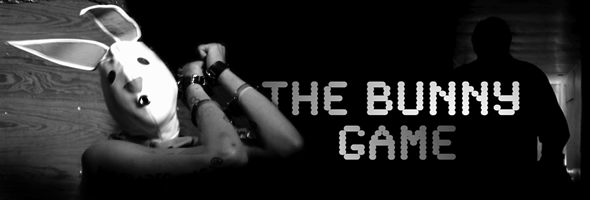
Told with a bare minimum of dialogue and plot, the film charts the descent into hell experienced by a junkie prostitute (Getsic), unnamed in the film but referred to as the Bunny in promotional materials, who's first seen servicing a particularly aggressive client (which reportedly caused some viewers to bolt for the doors before the first minute was up). She wanders the scuzzy streets of Hollywood and encounters a series of abusive johns before finally winding up with a creepy trucker (Renfro), only referred to as the Hog, who hauls her out to the middle of nowhere and proceeds to subject her to an endless ritual of abuse and body modification. Sort of an unholy merger between extreme performance art and experimental horror film, The Bunny Game essentially dares viewers to sit through it without crying uncle. Getsic claims to have undertaken the film as a sort of purging process since she had been abducted on more than one occasion herself, and as an example of psychotherapy on f Of course, this is a film screaming out for some context to help viewers cope with what they're watching, and thankfully there's plenty of that in the extras. Rehmeier appears for an audio commentary with Getsic (via Skype) in which they start off the bat by talking about going "all the way" on film, the aforementioned walkouts, casting Hog, the extended fasting Getsic underwent for the role, and the enigmatic ending which Getsic views as part of the "healing process" of making the film. The 16-minute "Caretaking the Monster" features the director and star returning on camera along with Renfro, Page, and Gregg Gilmore, who was originally supposed to play the male lead but took a supporting role instead over fears one can easily understand by watching the finished product. In its own way this featurette is almost as unsettling as the feature, including a creepy anecdote about how Renfro first met the director and Getsic's admission that "part of my soul died" during filming. Finally the disc closes out with both the standard trailer and an alternate one (the former is really, really effective) and a stills gallery. Approach with extreme caution, but if you're up for it, this is another compelling chapter in the ongoing history of no-holds-barred fringe filmmaking.
Directed by Adam Rehmeier
Starring Rodleen Getsic, Jeff Renfro, Drettie Page, Gregg Gilmore
Autonomy (Blu-Ray & DVD) (US R0 HD/NTSC) / WS (1.78:1) (16:9) / DD2.0
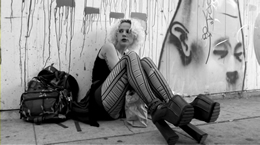 "Shock value" is a term that's lost much of its meaning in recent years, at least in cinematic terms. With a marketplace flooded by raunchy and gory unrated versions of almost every other studio release around, it takes something truly extreme to stand out from the pack. Most of the standouts in recent years have come from Europe, such as the Hu
"Shock value" is a term that's lost much of its meaning in recent years, at least in cinematic terms. With a marketplace flooded by raunchy and gory unrated versions of almost every other studio release around, it takes something truly extreme to stand out from the pack. Most of the standouts in recent years have come from Europe, such as the Hu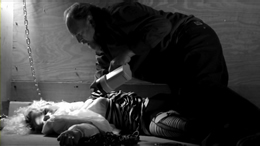 man Centipede films, Martyrs, and A Serbian Film, but one American title, The Bunny Game, also shoved its fingers so far down viewers' throats that it was promptly banned (most predictably in the UK) and derided by many festival attendees for its unsimulated portrayal of sadism and raw human anguish. What makes this one so slippery to handle is the fact that its lead actress, first-time performer Rodleen Getsic, was a primary force in its creative development and worked closely with her director, Adam Rehmeier, about the boundaries they would push on screen. How much of that effort was worth it is going to be up to individual taste, but there's certainly never been anything else quite like it.
man Centipede films, Martyrs, and A Serbian Film, but one American title, The Bunny Game, also shoved its fingers so far down viewers' throats that it was promptly banned (most predictably in the UK) and derided by many festival attendees for its unsimulated portrayal of sadism and raw human anguish. What makes this one so slippery to handle is the fact that its lead actress, first-time performer Rodleen Getsic, was a primary force in its creative development and worked closely with her director, Adam Rehmeier, about the boundaries they would push on screen. How much of that effort was worth it is going to be up to individual taste, but there's certainly never been anything else quite like it. 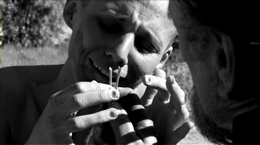 ilm, it's definitely one of the more abrasive examples around. From head shaving to the now-infamous real branding, it's impossible to watch this without feeling concern for the performer rather than the character, and it's this queasy creative decision that's thrown up the biggest obstacle for many viewers. Exactly where that line should be drawn still hasn't been determined; after all, no one was up in arms when men perpetrated similarly drastic, real damage to their bodies in films like Maîtresse and Schramm. Presumably the difference is that here we have a woman calling to shots to have herself permanently marked by her film and going through very vocal physical hell in the process, and at least going by the logic of some censor boards, this could trigger something in certain unhealthier mind sets. Whether that's true is something yet to be proven, but what's indisputable is that this is as far from conventional entertainment as you can get. Troubling, ugly, and harsh, this film spits right in your face and dares you to stand there and take it.
ilm, it's definitely one of the more abrasive examples around. From head shaving to the now-infamous real branding, it's impossible to watch this without feeling concern for the performer rather than the character, and it's this queasy creative decision that's thrown up the biggest obstacle for many viewers. Exactly where that line should be drawn still hasn't been determined; after all, no one was up in arms when men perpetrated similarly drastic, real damage to their bodies in films like Maîtresse and Schramm. Presumably the difference is that here we have a woman calling to shots to have herself permanently marked by her film and going through very vocal physical hell in the process, and at least going by the logic of some censor boards, this could trigger something in certain unhealthier mind sets. Whether that's true is something yet to be proven, but what's indisputable is that this is as far from conventional entertainment as you can get. Troubling, ugly, and harsh, this film spits right in your face and dares you to stand there and take it.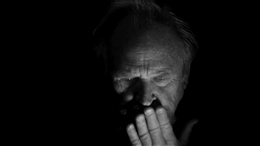 Whatever issues one may have with The Bunny Game as cinema, it certainly boasts a bold visual look with moody black-and-white imagery captured on crisp HD video. The rapid-fire editing in some sequences (especially the harrowing bunny mask bit in the desert) poses something of a compression challenge, but the Blu-Ray from Autonomy handles it well and seems to capture the original source with a great deal of fidelity. (There's a D
Whatever issues one may have with The Bunny Game as cinema, it certainly boasts a bold visual look with moody black-and-white imagery captured on crisp HD video. The rapid-fire editing in some sequences (especially the harrowing bunny mask bit in the desert) poses something of a compression challenge, but the Blu-Ray from Autonomy handles it well and seems to capture the original source with a great deal of fidelity. (There's a D VD included, too, if you're so inclined.) The film has a few visual quirks worth noting, such as intermittent flashbacks and video playback scenes involving a previous victim (Page) subjected to a similar ordeal; these were apparently shot in regular 4:3 standard def and sometimes appear squeezed to fit the frame, which is a bit of an odd aesthetic choice. You'll also see a little frame blurring in some scenes, though again this may be down to the deliberately stylized way some of the scenes were edited and processed. In any case, it looks good in motion except when it's supposed to be ugly. The two-channel Dolby Digital stereo mix isn't lossless (sorry, just 192 for you), though whether the film needs more than that is also debatable as the soundtrack largely consists of ambient noise and occasional blasts of industrial music.
VD included, too, if you're so inclined.) The film has a few visual quirks worth noting, such as intermittent flashbacks and video playback scenes involving a previous victim (Page) subjected to a similar ordeal; these were apparently shot in regular 4:3 standard def and sometimes appear squeezed to fit the frame, which is a bit of an odd aesthetic choice. You'll also see a little frame blurring in some scenes, though again this may be down to the deliberately stylized way some of the scenes were edited and processed. In any case, it looks good in motion except when it's supposed to be ugly. The two-channel Dolby Digital stereo mix isn't lossless (sorry, just 192 for you), though whether the film needs more than that is also debatable as the soundtrack largely consists of ambient noise and occasional blasts of industrial music.
Reviewed on July 24, 2012.
![]()